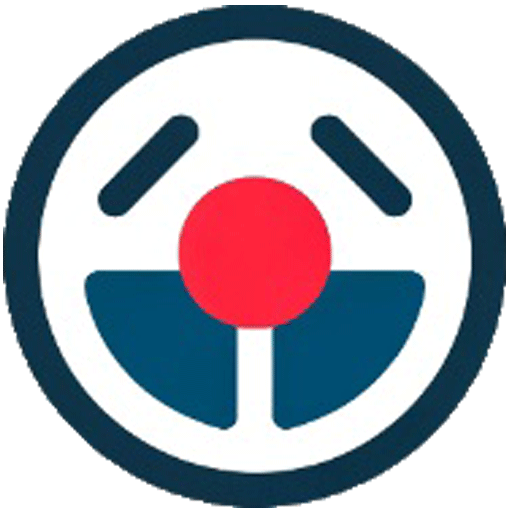The 5 Best Textbooks for Learning Korean for Beginners
So, you’ve decided to learn Korean. Welcome to the club! I still remember the excitement—and the sheer confusion—of starting out. You’re probably scrolling through endless options, watching review videos, and asking yourself, “Which is the right learning korean for beginners textbook for me?” You’re afraid of spending $30, $40, or even $50 on a book that will just end up collecting dust.
I’ve been there. My name is Seconds, and I’ve spent years navigating the world of Korean self-study. Think of me as your helpful sunbae (선배), or senior, who has already tried, failed, and succeeded with these resources. My goal is to save you the time and money I wasted, so you can make a confident choice and get to the fun part: actually learning.
In this guide, we’ll break down the top 5 textbooks for absolute beginners. We’ll look at their teaching styles, their pros and cons, and exactly who each book is perfect for. We’ll even compare popular series like TTMIK vs Go Billy Korean in terms of their textbook offerings. By the end, you’ll know exactly which book to add to your cart.
Quick Comparison: The Best Korean Textbooks for Beginners
For those who want a quick overview, here’s a summary of my top picks.
| Textbook Name | Best For (Learner Type) | Key Strength |
| Talk To Me In Korean Level 1 | The Casual, Conversational Learner | Fun, bite-sized lessons |
| Korean Grammar in Use: Beginning | The Serious Grammar Enthusiast | In-depth, encyclopedic explanations |
| Integrated Korean: Beginning 1 | The Academic, Structured Learner | University-level, all-in-one course |
| Ewha Korean 1-1 | The Visual, Communicative Learner | Task-based & visually appealing |
| Hanyang Korean 1 | The Balanced Self-Studier | Well-rounded skill development |
Your Crucial First Step: How to Learn Hangul Fast
Before you even think about grammar, you must learn the Korean alphabet, Hangul (한글). Don’t panic! It’s widely considered one of the most logical and easy-to-learn writing systems in the world. You can genuinely learn the basics in a single afternoon.
Do not buy a textbook that uses romanization. Relying on English letters to read Korean will destroy your pronunciation and hold you back. Every good textbook will teach you Hangul in its first chapter. Some, like the Talk To Me In Korean series, even have separate, dedicated books for it that are fantastic. The key to learning Hangul fast is to commit to it for a day or two and then immediately start reading real Korean words, even if you don’t know what they mean yet.
The 5 Best Textbooks for Learning Korean for Beginners (2025 Review)
Alright, let’s dive into the detailed reviews. I’ll give you my honest take on each one based on my experience and what I’ve seen work for other learners.
1. Talk To Me In Korean (TTMIK) Grammar Textbook Level 1
Overview: TTMIK is famous for its fun, podcast-style lessons, and their textbook captures that same energy. It’s designed to feel less like a formal class and more like a friend explaining things to you. The lessons are short, focus on one grammar point at a time, and are built around natural, conversational Korean.
Pros:
- Extremely Accessible: The lessons are short and easy to digest, making it perfect for busy people who can only study for 15-20 minutes a day.
- Excellent Audio: The accompanying audio (free online) is clear, natural, and helps you nail pronunciation from day one.
- Focus on Speaking: The grammar and vocabulary are immediately useful for everyday conversation. You’ll learn how to say “What is this?” and “Where is the bathroom?” very quickly.
- Fun and Engaging: The design is modern and friendly, with illustrations that help you remember concepts.
Cons:
- Light on Grammar: While great for starting, it doesn’t go as deep into the “why” of grammar as other books. It’s more about practical usage.
- Requires Other Resources: You’ll likely want to supplement it with a vocabulary app, as each lesson only introduces a handful of new words.
- The Verdict: This is the perfect choice for the casual learner whose main goal is to start speaking and understanding conversational Korean as quickly as possible.
2. Korean Grammar in Use: Beginning
Overview: This is the book I call the “Grammar Bible.” It’s not a traditional textbook with a linear story; it’s a comprehensive reference guide. Each unit is dedicated to a specific grammar point, explaining it with incredible detail, nuance, and tons of example sentences. I’m including this as a full Korean Grammar in Use review because it’s a staple for a reason.
Pros:
- Unmatched Depth: No other beginner book explains grammar as thoroughly. It covers subtle differences and exceptions that others gloss over.
- Clear Structure: The format is consistent for every grammar point: explanation, do’s and don’ts, and example sentences that contrast similar patterns.
- Excellent for Self-Study: Because it’s so detailed, it’s fantastic for answering the “But why?” questions that inevitably come up when you’re learning alone.
- Great Reference Tool: You will keep this book on your desk and refer back to it for years, even after you’re past the beginner stage.
Cons:
- Can Be Overwhelming: For an absolute beginner, the sheer amount of information can feel intimidating.
- Not a “Course” Book: It doesn’t teach you in a guided, progressive way. You need to use it alongside another resource or be disciplined enough to work through it systematically.
- A Bit Dry: It’s a technical manual, not a fun, story-based textbook.
- The Verdict: This is the perfect choice for the dedicated, analytical self-studier who loves to understand the mechanics of a language and wants a resource they’ll use for years.
3. Integrated Korean: Beginning 1
Overview: This is the gold standard for university Korean courses in North America. It’s a very traditional, academic textbook. Each chapter is based on a dialogue between students, and it systematically builds up your vocabulary and grammar while touching on cultural notes. I personally used this in my first formal class, and it provides an incredibly solid foundation.
Pros:
- Comprehensive: It effectively balances reading, writing, listening, and speaking skills.
- Structured Progression: The learning path is logical and well-paced. You never feel like you’re jumping ahead too quickly.
- Lots of Practice: Comes with a companion workbook (sold separately) that has tons of drills to reinforce what you’ve learned.
- Cultural Insights: Includes genuinely interesting notes about Korean culture that provide context to the language.
Cons:
- Expensive: This is usually the priciest option, especially when you factor in the workbook and audio.
- Designed for the Classroom: Some of the exercises are pair-based, which can be awkward for a self-studier.
- Slower Pace: Because it’s so thorough, your progress in conversational ability might feel slower than with a book like TTMIK.
- The Verdict: This is the perfect choice for the disciplined, academic learner who wants a formal, university-style course experience from home.
4. Ewha Korean 1-1
Overview: Produced by the prestigious Ewha Womans University, this textbook is modern, colorful, and focuses heavily on practical, communicative tasks. Each lesson is centered around a real-life situation (e.g., ordering coffee, introducing yourself) and gives you the exact language you need to navigate it.
Pros:
- Visually Appealing: This is one of the best-designed textbooks out there. The layout is clean and uses color and images effectively, which is great for visual learners.
- Focus on Communication: The goal of every chapter is to help you accomplish a specific task. It’s very practical.
- Good for Speaking and Listening: The accompanying audio is excellent, and the exercises encourage you to speak from the very beginning.
Cons:
- Grammar Explanations Can Be Brief: Like TTMIK, it sometimes sacrifices deep grammar explanations for the sake of communicative flow.
- Workbook is Essential: The main textbook is quite light on exercises, so you really need to purchase the accompanying workbook to get enough practice.
- The Verdict: This is the perfect choice for the visual learner who wants a modern, task-based approach focused on real-world communication.
5. Hanyang Korean 1
Overview: From Hanyang University, this book strikes a fantastic balance between the academic rigor of Integrated Korean and the modern, communicative style of Ewha Korean. It offers clear grammar explanations, relevant vocabulary, and exercises that cover all four language skills (reading, writing, listening, speaking).
Pros:
- Well-Balanced: It doesn’t neglect any single skill. You get a solid dose of grammar, conversation practice, and reading comprehension in each chapter.
- Clear and Concise: The grammar explanations are easy to understand without being overly simplistic.
- Good Value: It’s often more affordable than other university textbooks but delivers similar quality.
Cons:
- Less Common: It can be harder to find online communities or resources specifically tailored to this textbook series.
- Audio Can Be Fast: Some beginners find the dialogue audio to be a bit fast compared to other books.
- The Verdict: This is the perfect choice for the all-rounder self-studier who wants a balanced, structured, and effective course without the dryness of a purely academic text.
Textbooks vs. Apps: What’s the Best App to Learn Korean with Your Textbook?
Many beginners ask if they can just use an app. Here’s my honest answer: apps are fantastic supplements, but they are not replacements for a good textbook.
A textbook provides structure and depth, especially for grammar, which is the skeleton of the language. Apps are best for reinforcement. Use your textbook as your core learning tool and use an app for:
- Vocabulary: Use a flashcard app like Anki or Memrise. You can download pre-made decks or, even better, create your own with words from your textbook chapters.
- Pronunciation Practice: Pimsleur or similar audio-focused programs can be great for listening and repeating.
- Real-Life Practice: Use an app like HelloTalk to find language exchange partners once you have a few basic sentences down.
Don’t search for the single best app to learn Korean; instead, build a toolkit where your textbook is the foundation and apps are the specialized tools.
So, Which Textbook Should You Actually Buy?
I know that was a lot of information. Let’s make it simple. Based on your learning style, here is my final recommendation:
- For the Casual Learner who wants to speak fast: Buy Talk To Me In Korean Level 1. It’s fun, fast, and will get you speaking from day one.
- For the Future Grammar Master who loves details: Buy Korean Grammar in Use: Beginning. It’s an investment that will serve you for your entire learning journey.
- For the Disciplined Student who wants a “real” course: Buy Integrated Korean: Beginning 1. It’s the closest you can get to a university class at home.
- For the Visual Learner who thrives on real-world tasks: Buy Ewha Korean 1-1. Its beautiful design and practical focus will keep you engaged.
Ultimately, the best textbook is the one you will actually open and use every day. Pick the one that excites you the most, and you’ve already won half the battle.
Frequently Asked Questions (FAQ)
Do I really need a textbook, or can I just learn from YouTube?
While YouTube is an amazing resource for supplementary learning, a textbook provides a structured, logical path from A to B. It ensures you don’t have gaps in your knowledge, especially with foundational grammar. I recommend using both: the textbook for structure and YouTube for clarification and listening practice.
Should I buy the accompanying workbook with my textbook?
Yes, 100%. Language learning is an active skill. The textbook teaches you the concepts, but the workbook is where you actively use them, which is how they move into your long-term memory. Don’t skip the workbook.
How long does it take to finish a beginner textbook?
It depends entirely on your study schedule. If you study for an hour a day, 5 days a week, you can typically finish a beginner-level textbook like TTMIK Level 1 or Ewha 1-1 in about 2-3 months. More comprehensive books like Integrated Korean might take 4-6 months. Remember, it’s a marathon, not a sprint!
Your Korean Self-Study Starter Pack.pdf
Hi, I’m [jeybee]. As a long-time resident of Seoul, I’m passionate about uncovering the authentic, everyday magic of Korea. This blog is my way of sharing my favorite spots, tips, and cultural insights with you, beyond the usual tourist traps.




